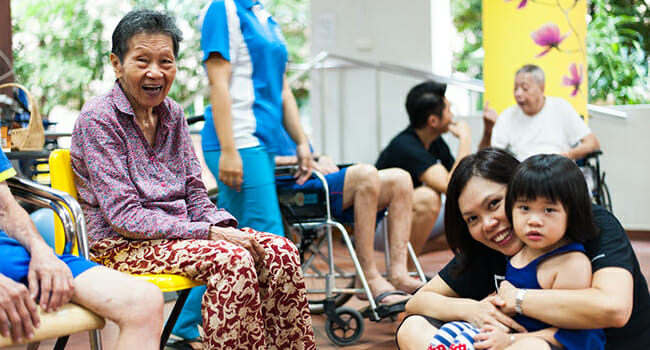What’s Working for Employee Volunteering in Asia?
This post was written by Yvonne Siu Turner, senior manager for corporate resources and programs at the Points of Light Corporate Institute and editor of “What’s Working: Effective Employee Volunteering in Asia, a Framework for Corporate Volunteer Leaders.”

With growing dialogue around purpose in the workplace and the increasing number of community-minded brands in the market, consumer and employee engagement trends in the United States are fueling the rise of corporate citizenship. Similar trends are also emerging in Asia.
Across Asia, the public increasingly believes that doing good should be part of a brand’s DNA. Regional leaders are also aware that employees are more motivated to perform when they see their company engaged in societal issues, according to Edelman’s 2016 Trust Barometer.
To address these global trends, Points of Light has published a new report that harnesses the insights of our corporate partners and global network of innovative volunteer organizations. The report, titled “What’s Working: Effective Employee Volunteering in Asia, A Framework for Corporate Volunteer Leaders,” features a framework to equip corporate volunteer leaders to build effective employee volunteer programs in Asia, highlighting examples of what’s working for more than 25 global and regional brands.
Unique in the market, it showcases a wealth of practitioner insights on critical elements needed to start and scale employee volunteering in Asia. These elements include getting employees in local offices excited about service, celebrating success, equipping and empowering volunteer leaders, offering a wide variety of volunteer opportunities to meet employees where they are, and more. Here are a few best practices featured in the report, which reveal what’s working for effective employee volunteer programs in Asia:
- Offer a wide variety of volunteer opportunities that meet employees where they are, especially considering regional differences in employee interests, societal expectations and NGO capacity. While industry research shows that in Asia, 71 percent of companies offer pro bono programs, other research suggests that hands-on volunteering is more popular in China due to nonprofit capacity constraints and employee interests. In Singapore, the receptivity of the nonprofit sector to training opportunities has allowed State Street, in partnership with CLSA, Credit Suisse, Macquarie and Nomura, to create a Not-for-Profit Director Program to equip staff for board service.
- Empower volunteer leaders at all levels within the company. Ichiro Takeuchi, an account manager in PIMCO’s Tokyo office, was so passionate about service that he recruited a planning committee that became Japan Volunteers, which was able to respond when the 2011 Tohoku earthquake and tsunami hit Japan. Today, Ichiro is an executive vice president at PIMCO and champions corporate volunteering at every turn.
- Celebrate small wins to help gain the respect of employees and volunteers in the Asia Pacific region. “While Groupon’s Asian offices have often been the last to roll out different HR or pilot programs, I’ve found that including their volunteer successes in global EVP messaging and announcements has generated a great amount of excitement and pride from our Asian colleagues,” said Alicia Koch, who manages Groupon’s employee volunteer program. Employee participation in Groupon’s APAC volunteer program increased from 6 percent in 2015 to 74 percent in 2016, with offices in Bangalore and Tokyo achieving 100 percent employee participation.
- Provide resources, training and supportive policies to mobilize and equip employees to serve. Mitsubishi Corporation provides volunteer training courses at work and five days of volunteer leave each year to enable employees to serve the community – especially through its Dream as One initiative, which supports the company’s deep societal commitment to people with disabilities. Mitsubishi employees have volunteered to help with everything from building a field for the Japan Para Wheelchair Rugby Championships and coaching a soccer class for children with cerebral palsy, to serving as members of the governing board of the Japanese Paralympic committee.
This report builds on Points of Light’s flagship resource, “Seven Practices of Effective Employee Volunteer Programs: An Evaluation Framework,” which documents the seven practice areas we have found are foundational to building effective employee volunteer programs.
The more than 25 featured case studies represent a wide variety of industries and organizations dedicated to global corporate citizenship in various stages of building out their employee volunteer programs around the world.
We encourage corporate volunteer leaders to use the framework, examples and stories as inspiration to develop practices that work for their organizations, along with Points of Light webinars, training and consulting services for a greater understanding of best practices for employee volunteerism.
As you start and scale volunteering in Asia and around the world, please share your thoughts and reflections on these resources. Tell us what’s working for you, so we can continue to answer this question: What’s working for employee volunteering in Asia?
Read the report at www.pointsoflight.org/corporate-institute/resources.
